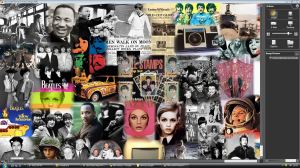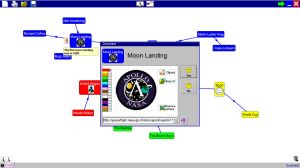Top of the World
 Firstly – an apology for the recent lack of blog posts! I can safely say that it’s been a little bit busy!! Not so long ago I was in Newcastle at the Northern Grid conference; talking about ICT and inclusion. Then last week I had a whirlwind trip to London to pick up a TES Award where I got to put on a posh frock and chat to a lot of great people, including the famous Mr Thorne of ‘Mr Thorne Does Phonics‘ fame. It was a fantastic event and everybody I came across was really lovely, so I’ve got to say a big thank you to the TES team – you guys rock! Anyway, apart from the great excitement of the TES awards I had a few things that were going on just before and then just after: namely TeachMeet ThinkBig and Reflect and Share. Here’s a short report on each.
Firstly – an apology for the recent lack of blog posts! I can safely say that it’s been a little bit busy!! Not so long ago I was in Newcastle at the Northern Grid conference; talking about ICT and inclusion. Then last week I had a whirlwind trip to London to pick up a TES Award where I got to put on a posh frock and chat to a lot of great people, including the famous Mr Thorne of ‘Mr Thorne Does Phonics‘ fame. It was a fantastic event and everybody I came across was really lovely, so I’ve got to say a big thank you to the TES team – you guys rock! Anyway, apart from the great excitement of the TES awards I had a few things that were going on just before and then just after: namely TeachMeet ThinkBig and Reflect and Share. Here’s a short report on each.
TeachMeet ThinkBig was small but perfectly formed. Due to the change of date we managed to clash with a few other things that were on but we managed to have a great time in any case. It was fairly amazing that anyone got to take part – our network crashed at 10am that morning and was still not working properly at 3pm. We managed it though and, thanks to the team at NGFL Cymru, it got streamed as well. Because we were in a fairly informal setting we managed to forget about the camera and have quite long discussions among ourselves – I’m sorry if this spoilt anyone’s viewing pleasure but there were a few newbies there and lots of questions were asked in between presentations. We had a number of virtual presentation from some great people I’ve got to know through Twitter, including this one from Mike McSharry (which had all of the attendees scribbling notes furiously), a couple from Alessio Bernardelli (including this one on using mind mapping properly) and a fantastic presentation on thinking skills in science from Claire Lotriet (there were many more great vidoes and I will add details to the wiki soon). We also had some interesting live presentations from Dave Stacey, who had some interesting ideas on how to use a text book, and Rosemary Davies, who shared a load of free web tools and talked about using Edmodo as a learning platform. I also gave a few presentations, mainly showing people a few things they may not have seen. One included a new variation of the old traffic light fans (I’ll talk about this at a later date in full) and later on I demonstrated 2Connect and explained why it’s such a great program for developing mind mapping in younger pupils or those with ALN. I also shared a few ideas that I’ve posted on here that I felt linked in with other presentations, especially ones that allowed for a bit of creativity or supported what was said in the presentations. In fact I probably talked way too much…(and that’s hardly ever the case).
Of course the Reflect and Share session, which took place on Wednesday, was quite different, This involved Year 6 pupils sharing their ideas about their learning and resources and activities they thought were worthwhile and eahc child involved made their own presentation or gave a demo to the staff who attended. We had presentation on a whole range of activities including developing problem solving skills by using Machinarium, using unusual images to inspire poetry, movement in art (inspired by work on Jackson Pollock), developing writing skills using Myst, using Wordle and other word based ideas and creating music using Incredibox and Isle of Tune (which I’ve talked about here). I don’t want to miss any presentations out here (pupils were brilliant and every presentation had something to offer) so the others were about the use of ebooks in the classroom (highlighting the books we have from Rising Stars), using Purple Mash at home and in class (everyone seems constantly amazed by how much content is available through it), using BlockCAD lego to link to DT, Prezi, Primary Pad and Primary Wall (this included live demos – staff were very impressed), our school library, how after school clubs have helped pupils improve skills, using Class Pet in class and at home (especially the maths activities), learning logs and Pivot Stick Figure. I was really proud of all of the pupils who took part (twenty one in all) but what I felt was truly fantastic was the way they had obviously taken on board things I had shown them or introduced them to and then taken it in their own direction. Hopefully it’s the sort of event that will take off in other areas – it was certainly worthwhile!















